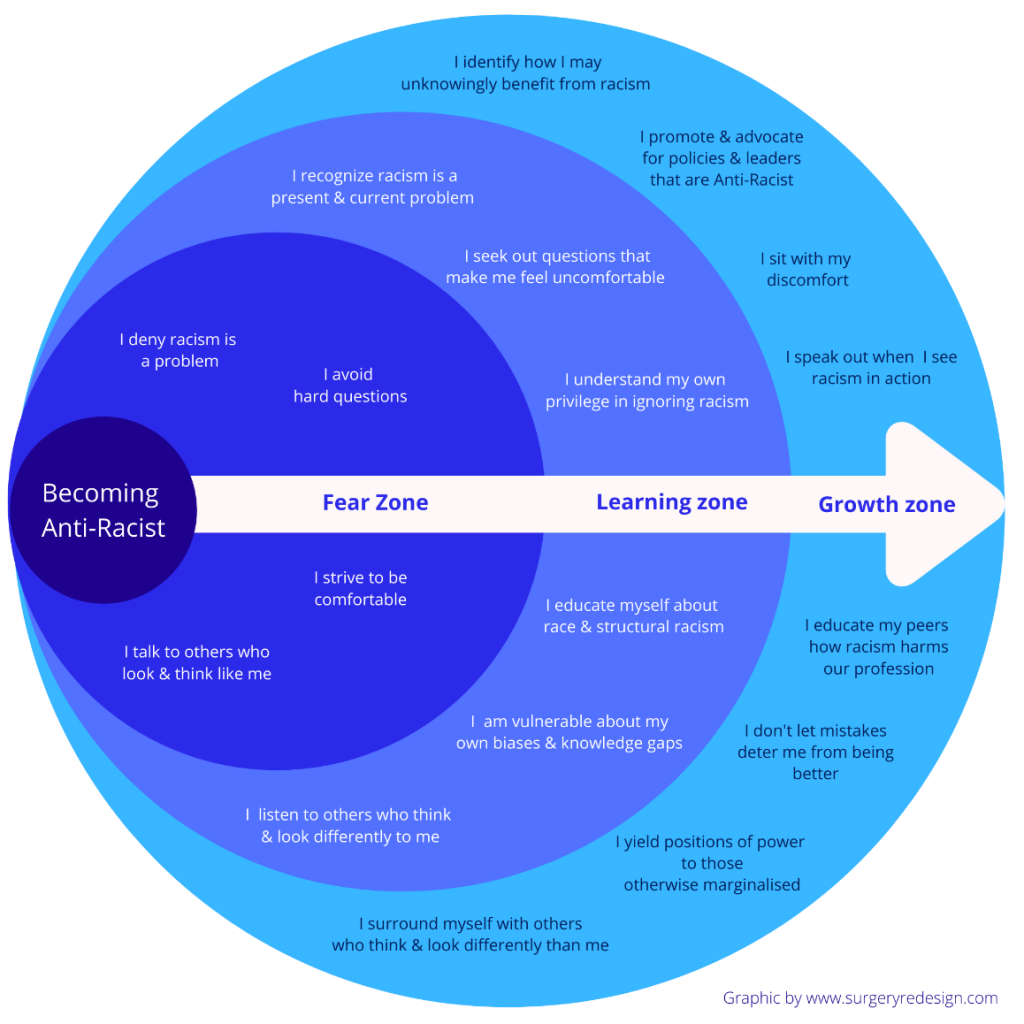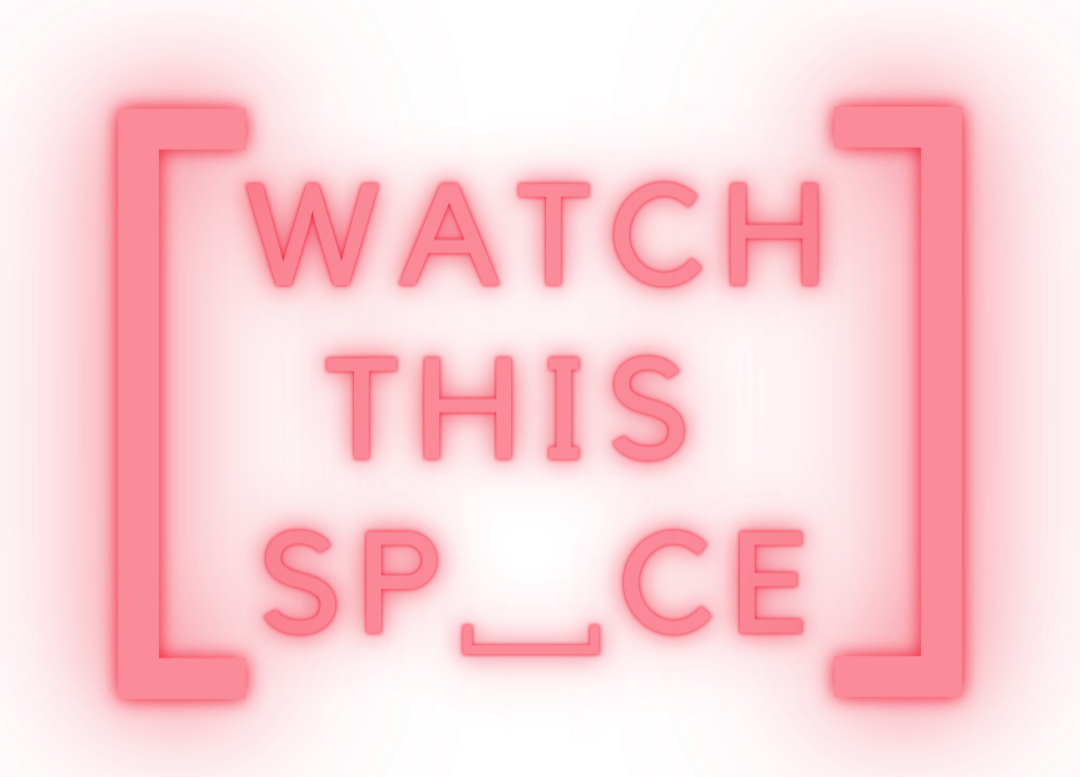Enough about statues and TV shows, let’s talk about the Fear Zone and actions.
“Dominant groups know very little about non-dominant groups. Non-dominant groups know a lot about dominant groups. If you’re in a dominant group you don’t even know what we’re talking about you’re so privileged.
If you’re in a dominant group, you have the power, you’re born into the power. If you’re in a non-dominant group you have to struggle, you’re invisible… The dominant group has the power, so until they make the changes… the dominant group has the power to make the changes overnight. Are we being equal in money and in race or not? And we have to hold our feet to the fire.”
Billy Jean King on Desert Island Discs in July 2018.
We have been building up to 2020 for a while. Tensions have been brewing, gaps have been exposed, and there’s been a rising movement developing. Society is not equal; it’s built on structures that benefit some people over others. The killing of George Floyd in Minnesota, USA has sparked a wave of protests around the world. The protests have been driven by, and have attracted, a diverse range of people. We have seen people of all ages, all colours, from all across the spectrum step out and speak up. This feels like a time of significant change.
The Black Lives Matter movement has been growing since 2013, starting in response to the acquittal of Trayvon Martin’s murderer. I remember seeing gifs and images on social media as they started this campaign of non-violent civil disobedience in response to police brutality. This grassroots movement has grown to become a global one, built by people who are saying ENOUGH. Black people are arrested by police at a higher rate than white people worldwide. They are killed through police brutality at a higher rate worldwide. Black Americans are dying of Covid-19 at three times the rate of white people; in the UK it is four times the rate of white people. This is not a USA problem; in the UK, black people are over three times more likely to be arrested than white people. Black people are not routinely represented in positions of power. If we widen that to the term BAME, ‘Black And Other Minority Ethnic’, we see a gap in society where life is not equal for those that fit into that umbrella BAME category. Society is based around the default of being white. Even the term BAME means that the different people within that are not heard and understood. Each group faces different types and scales of discrimination. We do have to start somewhere though.
Back to Billie Jean King’s words: people in non-dominant groups have been living with this their whole lives. There is an option in life of trying to fit in, not make a fuss and live with it. Allow people to shorten your name, dress like them, talk like them and avoid being too different. This can be mentally exhausting, but often easier than trying to fight constant battles. Another option is to resist, to insist on your differences being acknowledged, accepted and celebrated. It’s a tougher route, and there are a lot of obstacles along the way, and a lot of aggression to deal with, but this option can drive change if you can handle it. Of course, there are many other ways people live their lives in a system based around being white as the default. I suspect I would struggle to find anyone from a BAME background who says things are easy.
Dominant groups generally find this whole discussion difficult. They often cannot see what on earth we are talking about. You see people asking why there’s such a fuss and completely misunderstanding what the movement is about. This is likely to be their subconscious knowing there is something changing which might unsettle things. The best way to describe this is that they move into the Fear Zone. This is where people deny there is a problem, they lash out at any actions taken or they stay silent, making themselves complicit in the resistance to the movement.
At an organisational level, this can manifest itself in similar ways. There is denial that there is a problem, there is resistance to actions, and there is silence. For those that either do acknowledge the problem, or those that see they can no longer deny there is a problem, this can manifest itself in strange actions, which result in creating more division instead of bringing people together. It can also result in those in dominant positions seeking to lead and centre themselves in the discussion, which is problematic.
We have seen some of this recently with actions taken in response to the protests. A sense of panic and confusion as actions are taken which are not the key campaign goals of the Black Lives Matter Movement. Read here to find out what their goals actually are: https://blacklivesmatter.com/blms-whatmatters2020-goals-and-focus/
The panicked moves or statements which miss the point, or attempt to use the movement as a marketing tool, can cause even more problems. Especially for organisations which are not diverse in their make-up. For the discussion to progress, there does have to be some introspection and acceptance that there is a problem. Then we can move into how this problem can be discussed and addressed.
Terminology
A surgeon, Andrew Ibrahim, who runs a website https://www.surgeryredesign.com/ produced one of the best images I have seen recently about how people are feeling during this time. This is a useful tool to share with people to have discussions about it.

This graphic can help to unpick how people are behaving and feeling, and have the difficult conversations we need to have. There are phrases, words and actions which are causing difficulties for people to understand, and we need to talk about them.
Black Lives Matter means that it is not until all black lives are valued and not disadvantaged, that all lives matter. We have to work as a society on the injustices to create a fairer world. In saying Black Lives Matter, no-one is saying other lives do not matter too; what this means is we have to value black lives as much as all other lives are valued. Until we do that, all lives do not matter equally.
White Privilege does not in any way mean anything about your class or your wealth if you are white. It means that your skin colour is never the thing that has disadvantaged you. It means you have not had a racial slur shouted at you, been called names, shouted at, bullied, intimidated or had things denied to you because of the colour of your skin. It means your life has not been made more difficult due to the colour of your skin.
Structural Racism refers to all of the structures in society being built around white people as the default. It gives white people supremacy over everyone else; everyone else is forced to position themselves around it. This manifests in things like the education system not teaching people about certain elements of the past, and in positions of power being dominated by white people. It’s a feature of social, economic, political and judicial systems.
Anti-Racism is the work of actively opposing racism by advocating for changes, by calling out racism, by challenging racist behaviours. This is to oppose racism in all forms.
Ally is someone who makes a commitment and effort to recognise their privilege (this can be based on race, gender, class, sexual identity, etc.) and work in solidarity with oppressed groups in the struggle for justice. Allies understand that society will benefit if we fight oppression together.
Whataboutery is more of a social media term. This is a word to describe those who, when seeing someone talk about their own oppression, turn the focus on themselves and ask ‘but what about me?’ It’s a way of reducing the story of oppression and turning the focus back to them instead of listening and learning. Everyone has their own story, but whataboutery is not listening to the person talking about their oppression, their difficulties.
There are some useful terms here for more research into this:
https://www.racialequitytools.org/glossary#diversity
Actions
What we are seeing is organisations, often with white people in the positions of power, not knowing what to do. So they take some of these actions:
- Jump on the movement’s hashtag, which diverts attention away from the grassroots movement
- Put out a statement saying how diverse they are, when it’s easy to research and find out they are not
- Deny there is a problem at all and stay silent
- Take knee-jerk reactions in an attempt to do the right thing
In my opinion, councils pulling down statues and changing street names, and TV stations pulling down TV shows and films are these types of knee-jerk reactions. They play into triggering people who are in the Fear Zone, as it makes them feel their way of life is under threat, so they lash out.
These types of actions need consideration, education and discussion to back them up to help people to understand. They need conversations with a diverse range of voices to think about the right things to do to address inequalities and injustice in society. The reality is that organisations need help with this. They need to know who they can talk to; they need suggestions of actions they can take, and we need to have all of these difficult conversations.
This discussion is uncomfortable, complex and disruptive. We need to have these discussions together to create a fair and just world. As Bille Jean King said, “we have to hold our feet to the fire.”
Watch This Sp_ce are here to help! Join our free webinar for a discussion about what you can do, and how to #Pledge5Changes.
